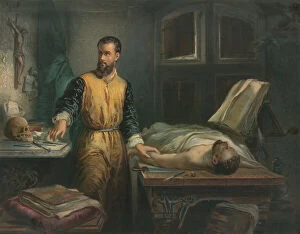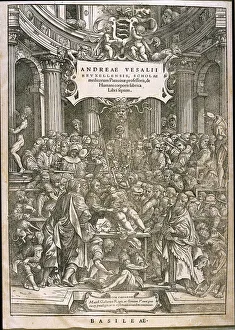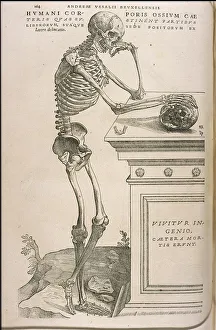Fabrica Collection
"Exploring the Intricate Fabrica of Humanity: From Vesalius to Chile and Beyond" Step into the world of "fabrica, " where art, science, and culture intertwine
All Professionally Made to Order for Quick Shipping
"Exploring the Intricate Fabrica of Humanity: From Vesalius to Chile and Beyond" Step into the world of "fabrica, " where art, science, and culture intertwine. Inspired by Andrea Vesalio's groundbreaking work in anatomy with his masterpiece "De humani corporis fabrica, " we embark on a journey that spans continents and centuries. In Penco, Bio Bio, Chile, South America, a general view captures the essence of this diverse land. Just as veins intricately connect our bodies, this landscape connects us to nature's wonders. Vesalio's revolutionary exploration of the human body is immortalized in his book "De humani corporis fabrica libri septem. " Its pages reveal an extraordinary understanding of our anatomical structure - a testament to both scientific curiosity and artistic brilliance. Traveling across Spain to Andalusia's Malaga unveils another marvel – the Russian Museum. The main façade stands tall like Hercules himself, echoing Vesalio's dedication to unraveling the mysteries within us all. As we enter through its doors, we are reminded that knowledge knows no boundaries or borders. Taking flight aboard Cessna 500 Citation I EC-CCY transports us further into this captivating narrative. We soar above vast landscapes just as Vesalio soared beyond conventional thinking during his time. Illustrations from "De Humani Corporis Fabrica" bring these discoveries vividly to life. Instruments for dissections serve as tools bridging artistry and scientific inquiry – reminding us that beauty can be found even in meticulous examination. Andreas Vesalius himself becomes more than a name through engravings capturing his likeness. His legacy lives on as he continues inspiring generations with his relentless pursuit of knowledge. From England's Brighton Fabrica Gallery to ancient libraries worldwide, echoes of "fabrica" resonate throughout history. Title pages from Vesalius' masterpiece remind us that his work remains a cornerstone of medical understanding.




























